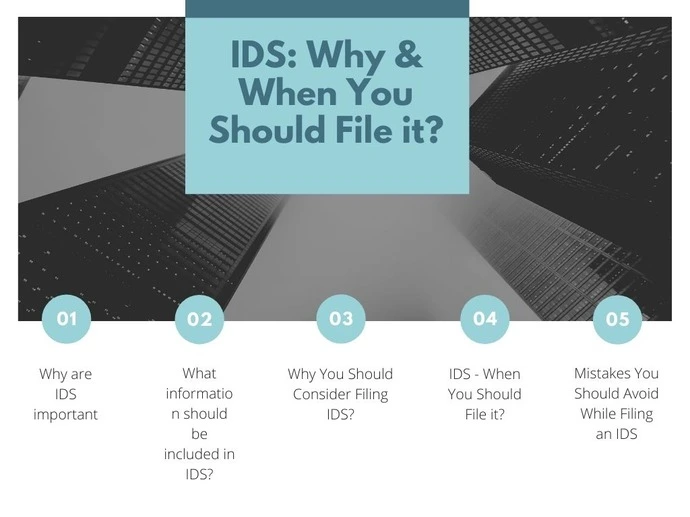An Information Disclosure Statement (IDS) lists all the prior-art claimed in a patent application. While filing a patent application, it is the responsibility of an applicant to disclose all the existing prior-art. If an applicant fails to enlist the prior-arts through IDS, the patent application will be rejected. The presence of prior-arts determines the patentability of an invention, USPTO has made it mandatory for applicants to disclose the same. In the following section, you will find information on how to prepare an IDS. Along with that, you will find information about what information should an applicant include in IDS preparation.
Related Article – Why You Should Avail Patent Proofreading Services?

Why Are IDS Important?
An information Disclosure Statements bears the key prior-arts which can impact the patentability of your invention. Since an inventor knows about the prior-art better than the patent examiner, it is the onus of the inventor to reveal the known prior-arts to the patent examiner. Filing an IDS serves this purpose. The applicant can file the IDS at any stage of the patent prosecution cycle. Failing to file an IDS may disappoint you. If prior-arts are discovered, the patent will become unenforceable. So, an applicant should file an IDS.
What information You Should Include in Information Disclosure Statement?
The information in the Information Disclosure Statement includes other issued patents, journals, books, magazine articles, or any other thing which is relevant to the applicant’s invention. An information statement disclosure should also include any references found during the prior-art search, novelty search or infringement search. The applicant should also include details of the references mentioned in applications that are related to the patent application.
Related Article – What is Prior-Art? Why You Should Conduct a Prior-Art Search?
Why You Should Consider Filing IDS?
There are various reasons that you should consider Filing Information Disclosure Statement. The applicant should file an Information Disclosure Statement in following cases:
- The Prior-Art is known or used in the US.
- Reference material is patented in other countries.
- The Prior-Art has its mention in the USPTO.
IDS – When You Should File it?
An applicant can file an Information Disclosure Statement at any stage of patent prosecution cycle. However, an applicant must file an IDS during these time frames:
- Along with the patent application.
- With in the 3 months of USPTO Filing date.
- Before the first office action.
- Within the three months of publication of international design patent application.
Mistakes You Should Avoid While Filing an Information Disclosure Statement
The below section highlights the common mistakes that an applicant usually conducts while filing an IDS. Take a look at these mistakes so you can avoid them.
- Applicants generally fail to submit copy of foreign references and non-patent literature along with Information Disclosure Statement.
- You should avoid citing immaterial references in the IDS. This will consume a lot of time.
- Knowledge about the latest requirements to file an Information Disclosure Statement.
- The applicant needs to provide supplemental IDS after the discovery of new prior-arts.
So, these are the mistakes that generally happen. Now that you are aware of them, you can avoid these mistakes and get timely patent grants.
Need Help In Drafting IDS? – Hire PDC
An Information Disclosure Statement (IDS) is crucial for the patentability of your invention. It ensures that all known prior-arts are disclosed, preventing future patent issues. Whether you’re working on a provisional patent application drafting or non-provisional patent application drafting, our patent drafting services can assist you in preparing a comprehensive IDS. Trust our experts to handle your IDS preparation with precision and efficiency.
